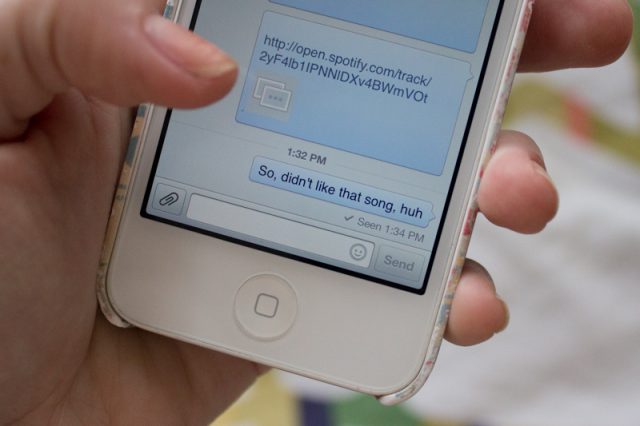
Few things on the Internet giveth and taketh away the way a read receipt does. An immediate read-and-response is immense validation, while a crucial message that has been read but not responded to is emotionally crushing—you can never pretend hard enough like you have better things to do than wait for a reply.
Read receipts are transitioning from a quirky, semi-invasive e-mail option to an always-on feature in messaging services like Facebook, but they aren't always welcome. In many instances, they create a mild, uncomfortable social pressure—just enough to keep you talking a little longer than you might want.
From e-mail to Facebook
Read receipts are the Internet progeny of a much older, snail-mail-based practice known as “return receipts.” Upon delivering a letter or package, the postal worker would return to the sender with a piece of paper verifying the delivery. Effectively, postal workers did double duty as tracking numbers.
That version of read receipts was more like a delivery notification, a concept that made its way into e-mail fairly early on as Message Disposition Notifications (MDNs) or Delivery Status Notifications (DSNs). DSNs were the real analogue to return receipts, telling the sender only whether the message had arrived, but the MDNs opened up a host of other options—allowing the sender to see whether the message was opened, for instance, or trashed without ever being looked at.
Read receipts are now permeating more immediate forms of messaging. Apple added iMessage to iOS 5 in 2010, which included read receipts as one of its features, Facebook added “seen” notifications to its messages in the summer of 2012, and Snapchat tells users when their snaps have been opened by the recipient and whether they were screenshotted.
Read receipts can be great. For instance, there was a time in the early days of text messages when it was hard to tell if messages had gone through, or in what order they had arrived, or when they might arrive. Read receipts could help. And, as a Facebook representative highlighted to Ars, they can also obviate the need to respond to some messages; for instance, if your significant other reminds you to pick up some milk, just opening the message creates a mutual understanding between the two of you that if you don’t get milk, it’s only one person’s fault—and only one person is going to run to the convenience store later.
But increasingly, services are turning on read receipts by default or, worse, providing no option for turning them off. iOS offers to turn read receipts on for you during phone setup, while both Facebook and Snapchat enforce always-on read receipts, creating an awkward vacuum when users can see that their messages have been opened and yet the recipient isn’t responding.
The implication of always-on read receipts is that both conversation partners are comfortable with the obligation to respond engendered by a read message. But that level of comfort seems reserved for close relationships; in most other cases, it can create unwanted social pressure.
The cases above are real, but it’s safe to say that most messages are written to be responded to. Therefore, when someone doesn’t respond to your message, it can be a blow to your ego. What was wrong with what you said? Too flip? Too harsh? Too dumb? Too boring? Has the conversation been boring the entire time and you didn’t notice? Have you been bored this entire time but just didn’t have the wherewithal to end the conversation first? Curse that other person for being braver than you and cutting ties first! You are now the hanger-on, just slightly more desperate than before.
And then you try to rationalize by imagining scenarios for your conversation partners. Maybe they were busy. Maybe they were interrupted. Maybe they’re playing hard to get. Maybe they had an emergency. Maybe they’re laughing so hard they fell on the floor and not only can’t reach their keyboards but broke a few ribs. Maybe they’re hurt. Maybe they’re dead! Maybe someone else was on their account and the embarrassment you’re currently suffering will never be known to the person you’re actually talking to. Maybe you wouldn’t talk to you, either.
You might offer a simple “goodbye” or “see you” or “well I have to do X now” as a way to definitively end a conversation online, but that has its own problems. The person who takes off is still inevitably on Facebook, their availability indicator green as ever. Or if you are that person, you might sign off but continue to browse Facebook, living a lie just to avoid a conversation.
Just keep replying
Benign though the intentions of enforced receipts might be, Facebook and similar services cannot be oblivious to the shame trajectory that results from the knowledge that someone has read your message but chosen not to respond. In a messaging medium where everyone knows whether their missives are read, human sympathy dictates that you will feel pressure not to leave a conversation partner hanging—and that leads to more usage of these services.
By forcing read receipts on users, these services provide an extra push to keep returning to your conversations, continuing them no matter how banal they become. Because you can’t be the bad guy. You won’t be the bad guy. So long as you keep talking.
reader comments
143